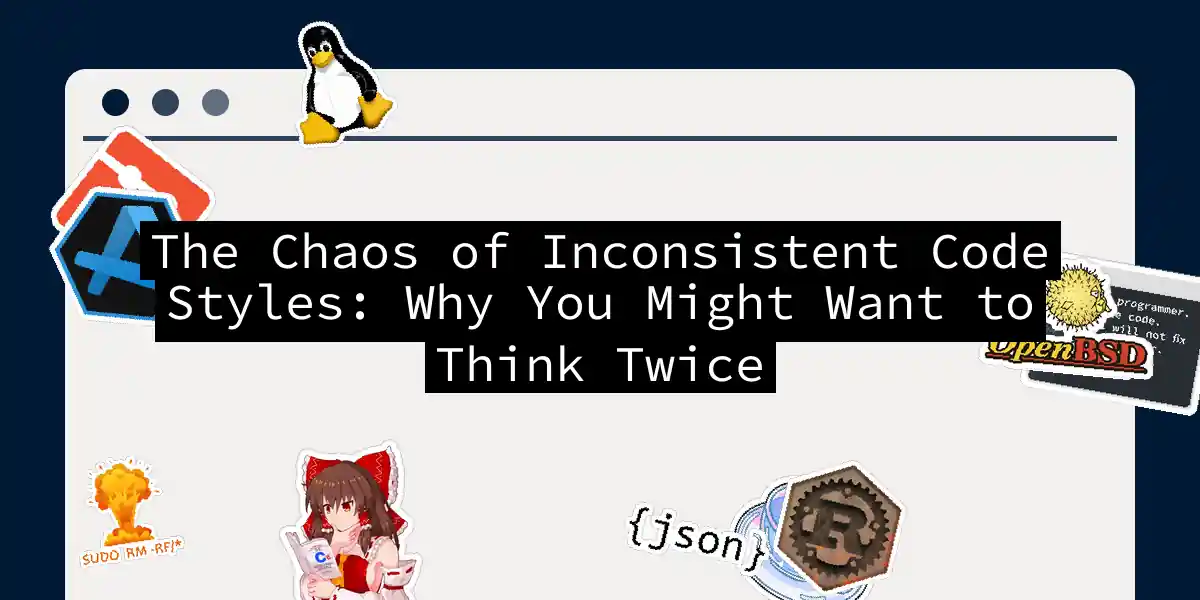The Great Coding Style Debate
In the world of software development, few topics spark as much debate as coding style. It’s a battle that has raged for decades, with each side passionately arguing for their preferred way of writing code. But what happens when you intentionally write in inconsistent code styles across projects? Is it a recipe for disaster, or could it be a liberating experience?
The Importance of Consistency
Before we dive into the chaos of inconsistent coding styles, let’s acknowledge the importance of consistency. Consistent code is like a well-organized library; it makes everything easier to find, understand, and maintain. Tools like ESLint, Checkstyle, and .editorconfig files are designed to enforce these standards, ensuring that every developer on the team is on the same page.
Here’s a simple flowchart illustrating the benefits of consistent coding:
The Argument for Inconsistency
Now, let’s flip the script. What if, instead of enforcing a uniform coding style, we allowed developers to express themselves freely? Here are a few arguments in favor of this approach:
Personal Expression and Creativity
Coding is not just about writing functional code; it’s also an art form. Allowing developers to use their own styles can foster creativity and personal expression. Just as authors have unique writing styles, developers can have their own coding styles that reflect their individuality.
Adaptability and Learning
When developers are exposed to various coding styles, they are forced to adapt and learn. This adaptability can make them better programmers in the long run, as they become more versatile and able to understand different approaches to problem-solving.
Reduced Bureaucracy
Enforcing a strict coding style can sometimes feel like bureaucratic red tape. By allowing different styles, you reduce the need for extensive code reviews and the constant back-and-forth over minor stylistic issues.
The Challenges of Inconsistent Code
However, there are significant challenges associated with allowing inconsistent code styles:
Code Readability and Maintainability
Inconsistent code can be a nightmare to read and maintain. Imagine trying to navigate a codebase where every developer has their own naming conventions, indentation styles, and coding practices. It’s like trying to read a book written by multiple authors with different writing styles.
Here’s a sequence diagram showing the confusion that can arise during code reviews:
Team Collaboration
Inconsistent code styles can lead to conflicts and difficulties during team collaboration. Code reviews become more complicated, and new team members may find it hard to adjust to the diverse coding styles.
Tools and Automation
While tools like ESLint and .editorconfig can enforce consistency, they may not be as effective in an environment where multiple styles are allowed. This could lead to a higher number of compiler warnings and errors, making it harder to identify critical issues.
Finding a Middle Ground
So, is there a middle ground where we can balance the need for consistency with the benefits of personal expression? Here are a few strategies:
Core Standards with Flexibility
Establish core standards that are non-negotiable, such as naming conventions and basic formatting rules. However, allow some flexibility in other areas, like indentation styles or the placement of curly braces.
Code Formatters and Linters
Use code formatters and linters to enforce the core standards, but configure them to be lenient in areas where personal preference is allowed. For example, you can use ESLint with custom rules that allow for different coding styles while still maintaining some level of consistency.
Regular Code Reviews
Regular code reviews can help ensure that while personal styles are allowed, they do not compromise the overall readability and maintainability of the codebase. This also provides an opportunity for feedback and learning.
Here’s a state diagram illustrating how this balance can be achieved:
Conclusion
Writing inconsistent code styles across projects is not a straightforward decision. While it offers benefits like personal expression and adaptability, it also poses significant challenges such as reduced code readability and maintainability.
Ultimately, the key is to find a balance that works for your team. By establishing core standards, using code formatters and linters, and conducting regular code reviews, you can create an environment where developers can express themselves while still maintaining a coherent and maintainable codebase.
So, the next time you’re tempted to rewrite someone’s code just to match your style, remember: it’s not about whose style is better, but about how we can work together to create something amazing. And who knows, you might just learn something new from that quirky coding style that drives you crazy.
